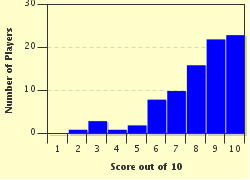Quiz Answer Key and Fun Facts
1. What black bird with russet red side-patches scratches at the ground and reminds you to "Drink your tea-ee-ee-ee"?
2. What small, slate-gray, bird seems more noticeable in winter, picking seeds off the snowy ground, either because it has come south to winter, or other birds have left and gone further south?
3. This magnificent bird is hard to miss. What raptor has a bright white head and tail, while the rest of the body is dark?
4. What owl doesn't live up to its name, when it comes to calls? You'd think it would give a horrifying scream, but instead it gives a soft sort of descending trill.
5. What little blue bird is even more blue than the bluebird? The male is covered with irridescent blue feathers all over except for darker wings, during breeding season.
6. Another blue bird; this one is unique. What bird is blue mixed with white and gray, with a blue crest, and is loud, aggressive, and able to chase away cats, small dogs and other birds?
7. What bird's name is appropriate, as it talks from the treetops to anyone who will listen, with a variety of whistles, squawks, squeaks and the occasional imitation? Even with bright yellow over its front, it's more often heard than seen.
8. What little winter visitor, related to the chickadee, has gray-blue coloring and a crest to match?
9. What bird is rarely seen, but often heard, with its "ca ca cal calp calp calp" ringing from tree to tree before a rain? Its other name is rain crow, because it supposedly predicts summer storms, though it's brown above and white below, looking nothing like a crow.
10. What black and white speckled woodpecker is the smallest that you'll see in the eastern half of North America?
Source: Author
littlepup
This quiz was reviewed by FunTrivia editor
rossian before going online.
Any errors found in FunTrivia content are routinely corrected through our feedback system.

